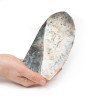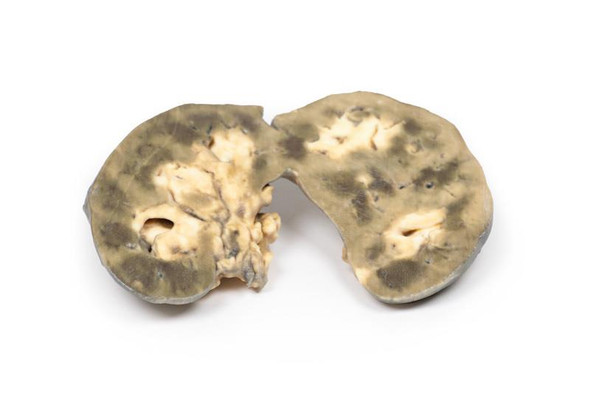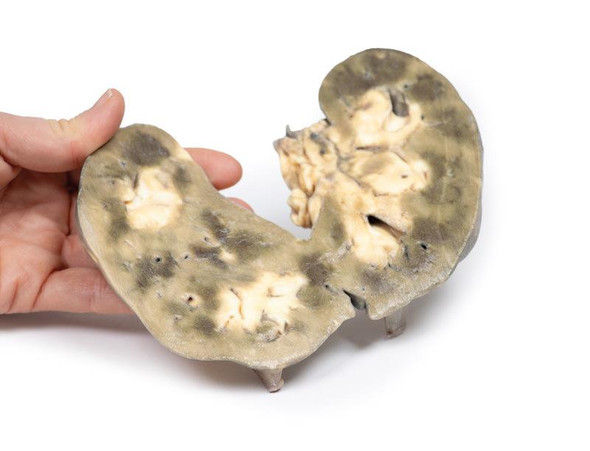Description
Clinical History
There is no clinical history for this specimen.
Pathology
The specimen is a parasagittal section of the right lung and the boundaries between the upper and lower lobes is clearly visible. The entire upper lobe is congested and pale grey in color.
Further Information
This is an example of a stage of lobar pneumonia in which the inflammatory exudates within the intra-alveolar space resulting in consolidation that affects a large and continuous area of the lobe of a lung. The affected lobe in this case shows grey hepatization or late consolidation. This usually occurs 2 to 3 days following red hepatization, and lasts for 4 to 8 days. The lung appears grey with liver-like solid consistency, due to a fibrinopurulent exudate, progressive disintegration of red blood cells, and hemosiderin. Large numbers of macrophages begin to appear in the interstitial tissue. They are the dominant cells, which attempt to clear away the cellular debris and acute inflammation through phagocytosis. The macrophages may contain iron due to consumption of erythrocytes, and are thus termed siderophages. Following grey hepatization, resolution and restoration of the pulmonary architecture start by the eighth day. The enzymatic action begins centrally and spreads peripherally, which liquefies the previous solid fibrinous content and eventually restores aeration.
The most common organisms that cause lobar pneumonia are Streptococcus pneumoniae, also called pneumococcus, Haemophilus influenzae and Moraxella catarrhalis. Mycobacterium tuberculosis, the tubercle bacillus, may also cause lobar pneumonia if pulmonary tuberculosis is not treated promptly. Other organisms causing lobar pneumonia are Legionella pneumophila and Klebsiella pneumoniae.[2]On a posteroanterior and lateral chest radiograph, an entire lobe will be radiopaque, which is indicative of lobar pneumonia.
Advantages
- Anatomically accurate and identical to real specimen
- No ethical issues - not real human body parts
- Reasonably priced
- Available within a short lead time
- Reproducible, several identical prints can be used as a classroom set
- Can be produced in different sizes to cater for the needs of the teacher
Human Cadavers
- Access to cadavers can be problematic. Many countries cannot access cadavers for cultural and religious reasons
- Cadavers cost a lot money
- High cost for establishing your own plastination suite
- Wet specimens cannot be used in uncertified labs
- Dissection of cadavers is a lot of staff time and that is a cost
- Storage of cadaver material needs special refrigeration etc. which has coast
- If you want another specimen you have to start all over again
Plastinates
- Costs
- Ethical issues
- Timeframe for plastination process
- Many countries do not allow their importation
- One of a kind
Superior 3D print results compared with conventional methods
- Vibrant color offering with 10 million colors
- UV-curable inkjet printing
- High quality 3D printing that can create products that are delicate, extremely precise and incredibly realistic
Clear Support Material
- To avoid breakage of fragile, thin, and delicate arteries, veins or vessels, a clear support material is printed on such spots. This makes the models robust and can be handled by students easily.

















